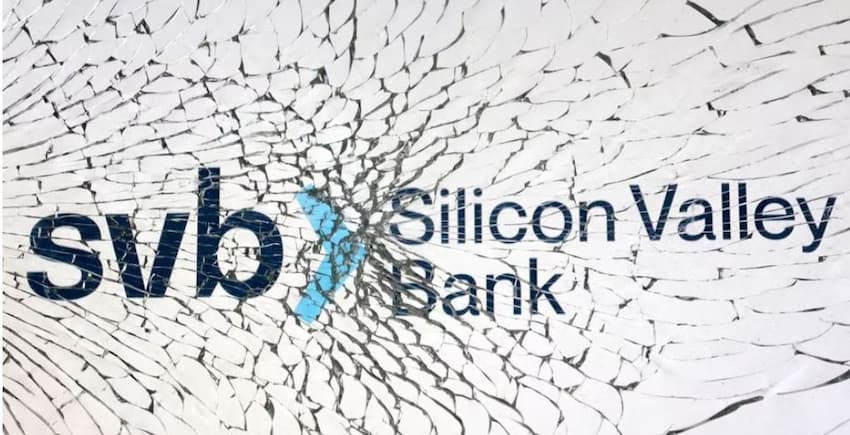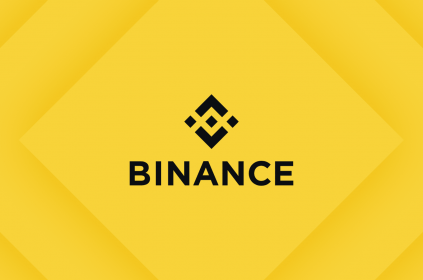The sudden collapse of Startup-focused lender, Silicon Valley Bank (SVB) has raised much concern in the African startup ecosystem as uncertainty lingers over how African startups can raise funding.
SVB, last week, became the largest bank to fail and shut down since the 2008 financial crisis. The shutdown of the bank has since sent shockwaves through the global financial system and prompting regulators to step in to contain the fallout.
In Nigeria, startups are particularly jittery and uncertain of their next source of funding following the collapse of the SVB.
But, one would wonder how the Silicon Valley Bank came to Collapse. Well, here is how that is possible. as explained in a report by The Verge.
What happened is a little complicated — and I’ll explain farther down — but it’s also simple.
A bank run occurs when depositors try to pull out all their money at once, like in It’s a Wonderful Life.
And as It’s a Wonderful Life explains, sometimes the actual cash isn’t immediately there because the bank used it for other things.
That was the immediate cause of death for the most systemically and symbolically important bank in the tech industry, but to get to that point, a lot of other things had to happen first.
What is Silicon Valley Bank?
Founded in 1983 after a poker game, Silicon Valley Bank was an important engine for the tech industry’s success and the 16th largest bank in the US before its collapse.
It’s easy to forget, based on the tech industry’s lionization of nerds, but the actual fuel for startups is money, not brains.
READ: Twitter Files Expose How FBI, CIA, FTC, Others Censor Users Through Social Media
Silicon Valley Bank provided that fuel, working closely with many VC-backed startups.
It claimed to be the “financial partner of the innovation economy” and the “go-to bank for investors.”
Among those banking at SVB: the parent company of this here website. That’s not all. More than 2,500 VC firms banked there, and so did a lot of tech execs.
It fell in less than 48 hours.
What happens to Silicon Valley Bank’s customers?
Most banks are insured by the Federal Deposit Insurance Corporation (FDIC), a government agency that’s been around since the Great Depression.
So of course, the accounts at Silicon Valley Bank were insured by the FDIC — but only up to $250,000. That’s how FDIC deposit insurance works.
That might be a lot of money for an individual, but we’re talking about companies here. Many have burn rates of millions of dollars a month.
A recent regulatory filing reveals that about 90 percent of deposits were uninsured as of December 2022.
The FDIC says it’s “undetermined” how many deposits were uninsured when the bank closed.
How bad could it get?
Even small disruptions to cash flow can have drastic effects on individuals, companies, and industries.
So while one very likely outcome is that the uninsured depositors will eventually be made whole, the problem is that right now they have no access to that money.
The most immediate effect is on payroll. There are lots of people who are wondering if their next paycheck will be disrupted.
Some people already know their paychecks will be; a payroll service company called Rippling had to tell its customers that some paychecks weren’t coming on time because of the SVB collapse.
For some workers, that’s rent or mortgage payments, and money for groceries, gas, or childcare that isn’t coming.
This is especially rough for startups. A third of Y Combinator companies won’t be able to make payroll in the next 30 days, according to YC CEO Garry Tan. An unexpected mass furlough or layoff is a nightmare for most companies — after all, you can’t make sales if the salesforce isn’t coming into the office.
Some investors are loaning their companies money to make payroll. Penske Media, the largest investor of this website’s parent company, Vox Media, told The New York Times that “it was ready if the company required additional capital,” for instance. That’s good, because Vox Media has “a substantial concentration of cash” at Silicon Valley Bank. Of course, one other problem is that a lot of investors were also banking at SVB, too.
Payroll isn’t the only expense a company has: there are payments to software providers, cloud services, and so on, too. I’m just scratching the surface here.
Update (3/13, 5:37PM ET): On Sunday, after this story published, the Treasury, Federal Reserve, and FDIC made a joint statement that depositors would have access to all of their money on Monday.
Does this have something to do with crypto?
SVB’s failure didn’t have anything directly to do with the ongoing crypto meltdown, but it could potentially worsen that crisis, too. Crypto firm Circle operates a stablecoin, USDC, that’s backed with cash reserves — $3.3 billion of which are stuck at Silicon Valley Bank. That stablecoin should always be worth $1, but it broke its peg after SVB failed, dropping as low as 87 cents. Coinbase stopped conversions between USDC and the dollar.
On March 11th, Circle said that it “will stand behind USDC and cover any shortfall using corporate resources, involving external capital if necessary.” The stablecoin’s value mostly recovered.
Oh, and bankrupt crypto lender BlockFi also has $227 million in funds stuck, too.
So if SVB doesn’t exist anymore, what takes its place?
In response to the collapse, the FDIC created a new entity, the Deposit Insurance National Bank of Santa Clara, for all insured deposits for Silicon Valley Bank. It will open for business on March 13th. People who have uninsured deposits will be paid an advanced dividend and get a little certificate, but that isn’t a guarantee people will get all their money back.
The FDIC’s job is to get the maximum amount from Silicon Valley Bank’s assets. That can happen a couple ways. One is that another bank acquires SVB, getting the deposits in the process. In the best-case scenario, that acquisition means that everyone gets all their money back — hooray! And that’s the best-case scenario not just for everyone who wants to get their paycheck on time, but also because the FDIC’s greater mission is to ensure stability and public confidence in the US banking system. If SVB’s assets can only be sold for, say, 90 cents on the dollar, it could encourage bank runs elsewhere.
Okay, but let’s say that acquisition doesn’t happen. Then what? Well, the FDIC evaluates, then sells the assets associated with Silicon Valley Bank over a period of weeks or months, with the proceeds going to depositors. Uninsured deposits rank high on the pay-back scale, behind only administrative expenses and insured deposits. So even if a sale doesn’t happen soon, the odds are high that customers will get their money back, assuming they can stay afloat waiting for it.
Update (3/13, 5:37 PM ET): In response to the collapse, the FDIC created a new entity, making depositors and borrowers customers of Silicon Valley Bank, N.A. On Monday morning, they had customer service and access to their funds by ATM, debit cards, or checks.
The money for all of this is, for now, coming from the FDIC’s Deposit Insurance Fund, which has said it will protect all depositors to the institution. While that leaves out shareholders and “certain” unsecured debt holders, it meant that the bank’s customers could mostly resume business on Monday.
President Joe Biden commented on the situation in an attempt to reassure the public, saying the Silicon Valley Bank funds would still “be there when you need them” without requiring a taxpayer-funded bailout. The money being used doesn’t come from taxes, instead, it’s from insurance premiums paid by banks, and interest earned on money invested in US government obligations, according to the FDIC.
On Monday, the Wall Street Journal reported that FDIC officials told senators they planned to try to auction the failed bank again. According to the WSJ, declaring the bank’s failure “ a threat to the financial system” now allows for some extra flexibility that wasn’t there before.
How did we get here?
So this is actually bigger than startups and Silicon Valley VCs. To understand how this happened, we’ve gotta talk about interest rates. Since 2008, they’ve been pretty low, sparking a venture capital boom and some real silliness (see: WeWork, Theranos, Juicero). There’s been a lot of froth for a long time, and it got worse during the pandemic, when the money printer went brrr. Meme stocks? Crypto boom? SPACs? Thank Federal Reserve chair Jerome Powell, who settled on zero percent interest rate policy (ZIRP).
So if you are, let’s say, a bank specializing in startups, do you know what ZIRP world does to you? Well, my children, according to the most recent annual filing from SVB, bank deposits grew as IPOs, SPACs, VC investment and so on went on at a frenetic pace.
And because of all these liquidity events — congrats, btw — no one needed a loan because they had all this cash. This is sort of a problem for a bank. Loans are an important way to make money! So, as explained in more detail by Bloomberg’s Matt Levine, Silicon Valley Bank bought government securities. This was a fine and steady way for SVB to make money, but it also meant it was vulnerable if interest rates rose.
Which they did! Powell started cranking up rates to slow inflation, and told Congress this week that he expects to let them get as high as 5.75 percent, which is a lot higher than zero.
Here’s the problem for Silicon Valley Bank. It’s got a bunch of assets that are worth less money if interest rates go up. And it also banks startups, which are more plentiful when interest rates are low. Essentially, these bankers managed to put themselves in double trouble, something a few short-sellers noticed (Pity the shorts! Despite being right, they’re also fucked because it’ll be hard to collect their winnings).
So did Silicon Valley just flunk the prisoner’s dilemma?
Okay, this mismatch in risk in and of itself won’t tip a bank over. A good old-fashioned bank run did that. And at Silicon Valley Bank, there was no George Bailey to stop it.
Here’s how it happened. When interest rates rose, VCs stopped flinging money around. Startups started drawing down more of their money to pay for their expenses, and SVB had to come up with cash to make that happen. That meant the bank needed to get liquidity — so it sold $21 billion of securities, resulting in an after-tax loss of $1.8 billion. It also came up with a plan to sell $2.2 billion in shares to help shore itself up. Moody’s downgraded the bank’s credit rating.
In its slide deck explaining all this, Silicon Valley Bank talks about — I am not making this up — “ample liquidity” and its “strong capital position.”
Now, recall, another bank called Silvergate had just collapsed (for crypto reasons). Investors, like horses, are easily spooked. So when Silicon Valley Bank made this announcement on March 8th, people bolted. Peter Thiel’s Founder’s Fund advised its portfolio companies to pull out, ultimately yanking millions. And you know how VCs love to follow trends! Union Square Ventures and Coatue Management, among others, decided to tell companies to pull their money, too.
This bank run happened fast, in less than two days. Tech nerds can take credit for that one. It used to be that you had to physically go to a bank to withdraw your money — or at least take the psychic damage of picking up a telephone. That slower process gave banks time to maneuver. In this case, digitalization meant that the money went out so fast that Silicon Valley Bank was essentially helpless, points out Samir Kaji, CEO of investing platform Allocate. Customers tried to withdraw $42 billion in deposits on March 9th alone — a quarter of the bank’s total deposits on a single day.
It was over the next day. The share sale was canceled. Silicon Valley Bank tried to sell itself. Then the regulators stepped in.
Who was in charge here?
Until shortly after the failure of Silicon Valley Bank, its (now-former) CEO Greg Becker was a director of the Federal Reserve Bank of San Francisco. That’s one of the 12 banks overseen by the Washington Fed.
While the bank run was ongoing, Becker told VCs, “I would ask everyone to stay calm and to support us just like we supported you during the challenging times.” As anyone who has ever been in a long-term relationship knows, telling someone else to calm down is a way to ensure they lose their entire goddamn mind. I think it might have been possible to staunch the bleeding if Becker had been even halfway good at PR. Obviously, he’s not.
But separately from Becker’s ill communication, he was the leader behind the spooky asset sale/share offering combo punch. In fact, Silicon Valley Bank had other options: it could have borrowed funds or tried to offer sweet deals to depositors who stayed.
That’s not all.
It turns out Becker also sold $3.6 million of shares in Silicon Valley Bank’s parent company on February 27th. This was a pre-arranged sale — he filed the paperwork on January 26th — but it does seem like curious timing! Becker was presumably aware of his own balance sheet, and a director of a regional Fed bank. He had to know the Fed was going to keep raising interest rates — I mean, if I knew it, he’d better have known it — and he had to know that would be bad news for Silicon Valley Bank.
What does this mean for startupland?
The venture capital ecosystem exists because once upon a time, banks wouldn’t loan startups money. Think about it: a 23-year-old nerd slapping together a startup in someone’s garage or whatever usually doesn’t own anything they can put up as collateral against a loan.
One way that Silicon Valley Bank bolstered startups was by offering risky forms of financing. For instance, the bank lent against money owed to a business’ accounts receivables. Even riskier: the company lent against expected revenue for future services. Silicon Valley Bank also offered venture debt, which uses a VC investment as a way of underwriting a loan. And it worked! These kinds of products helped build Silicon Valley into the powerhouse it is now, says Jonathan Hirshon, who’s done high-tech PR for the last 30 years.
The bank also would get slices of companies as part of its credit terms. That meant it made $13.9 million on FitBit’s IPO, for instance. More recently, Coinbase’s IPO paperwork revealed that Silicon Valley Bank had the right to buy more than 400,000 shares for about $1 a share. Coinbase’s shares closed at a price of $328.28 the first day it was listed.
Startups aren’t the only ones who need to raise money. Venture capitalists do too — often from family offices or governments. Silicon Valley Bank invested in a number of VCs over the years, including Accel Partners, Kleiner Perkins, Sequoia Capital, and Greylock.
This kind of gets us to one of SVB’s key problems: Silicon Valley is actually a small town. And while that meant SVB was the cool banker for the tech and life sciences startups here, that also meant its portfolio wasn’t very diverse. The incestuous nature of Silicon Valley startups means gossip is a contact sport, because everyone here is hopelessly entwined with everyone else.
I don’t know if this is going to lead to bigger problems. It could! A lot of other banks are also losing money on their securities. But the gossipy nature of Silicon Valley, and the fact that so many of these firms are entwined, made the possibility of a bank run higher for SVB than it was for other places. Right now, rumors are flying in WhatsApp groupchats full of founders scrambling for cash. I suspect, too, that we’ll start seeing scammers attempting to target panicky technology brothers, to extract even more cash from them.
I don’t know what’s going to happen now, and I don’t think anyone else does, either. I do know, though, that SVB’s leadership weren’t the only ones who fucked up. This was the second big bank failure in a single week, suggesting our regulators were asleep at the wheel. And who was the primary regulator for both banks? Why, our friends at the Fed,
Update (3/13, 5:37 PM ET): Added details on the systemic risk exception established by regulators to protect depositors and allow customers access to their funds on Monday, as well as the ongoing attempts to sell Silicon Valley Bank.



















 and then
and then